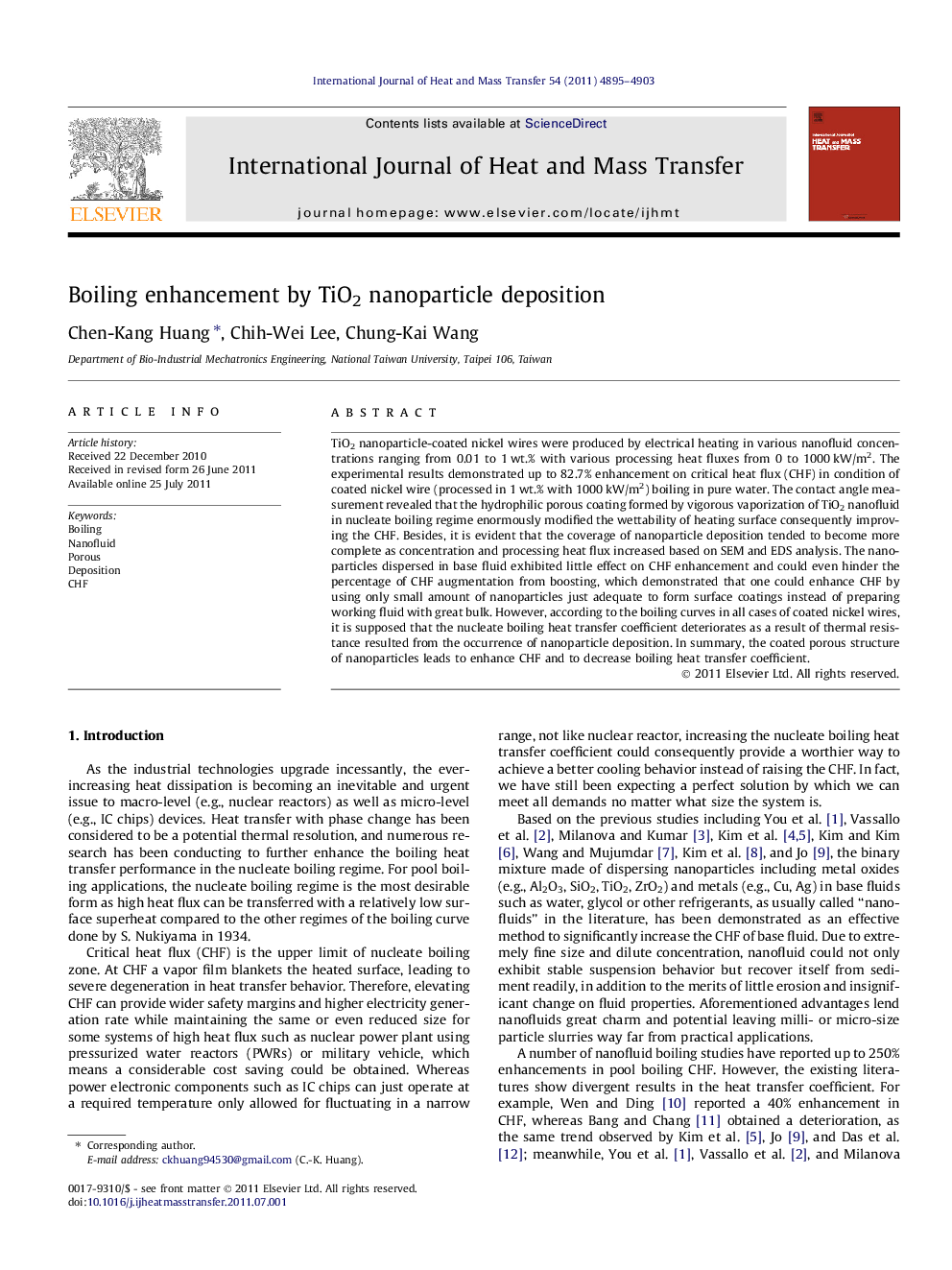| Article ID | Journal | Published Year | Pages | File Type |
|---|---|---|---|---|
| 660357 | International Journal of Heat and Mass Transfer | 2011 | 9 Pages |
Abstract
TiO2 nanoparticle-coated nickel wires were produced by electrical heating in various nanofluid concentrations ranging from 0.01 to 1Â wt.% with various processing heat fluxes from 0 to 1000Â kW/m2. The experimental results demonstrated up to 82.7% enhancement on critical heat flux (CHF) in condition of coated nickel wire (processed in 1Â wt.% with 1000Â kW/m2) boiling in pure water. The contact angle measurement revealed that the hydrophilic porous coating formed by vigorous vaporization of TiO2 nanofluid in nucleate boiling regime enormously modified the wettability of heating surface consequently improving the CHF. Besides, it is evident that the coverage of nanoparticle deposition tended to become more complete as concentration and processing heat flux increased based on SEM and EDS analysis. The nanoparticles dispersed in base fluid exhibited little effect on CHF enhancement and could even hinder the percentage of CHF augmentation from boosting, which demonstrated that one could enhance CHF by using only small amount of nanoparticles just adequate to form surface coatings instead of preparing working fluid with great bulk. However, according to the boiling curves in all cases of coated nickel wires, it is supposed that the nucleate boiling heat transfer coefficient deteriorates as a result of thermal resistance resulted from the occurrence of nanoparticle deposition. In summary, the coated porous structure of nanoparticles leads to enhance CHF and to decrease boiling heat transfer coefficient.
Keywords
Related Topics
Physical Sciences and Engineering
Chemical Engineering
Fluid Flow and Transfer Processes
Authors
Chen-Kang Huang, Chih-Wei Lee, Chung-Kai Wang,
